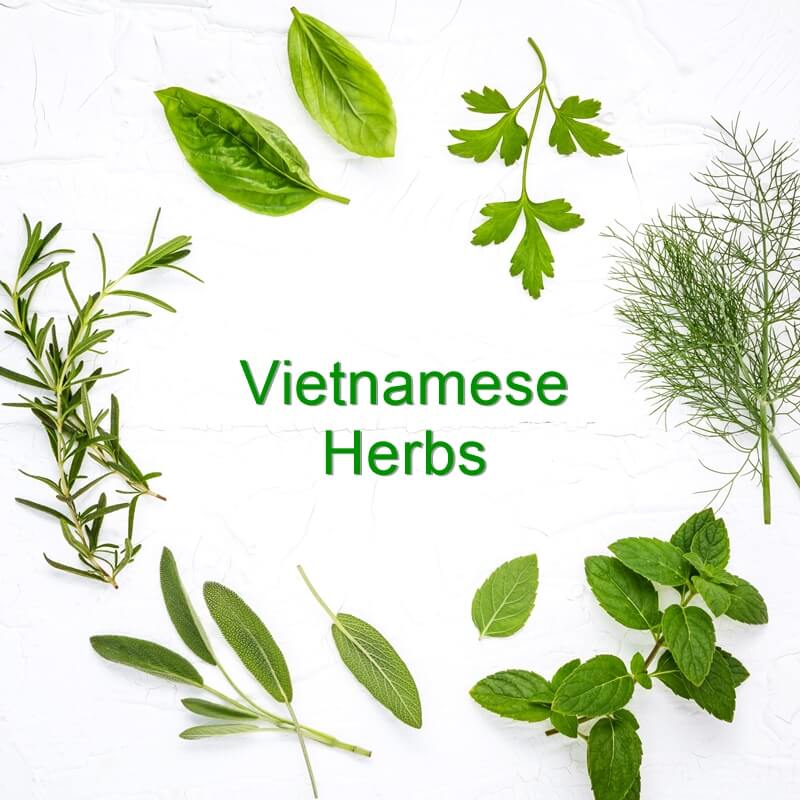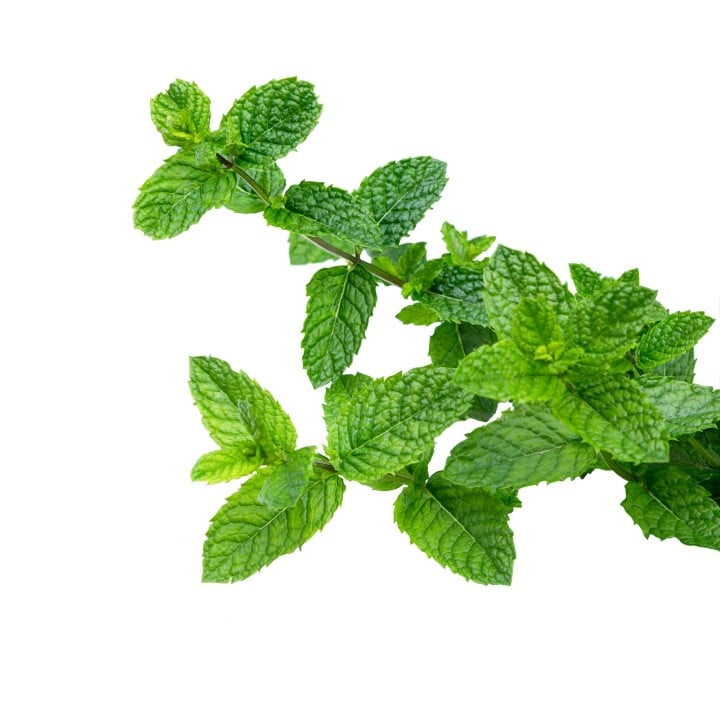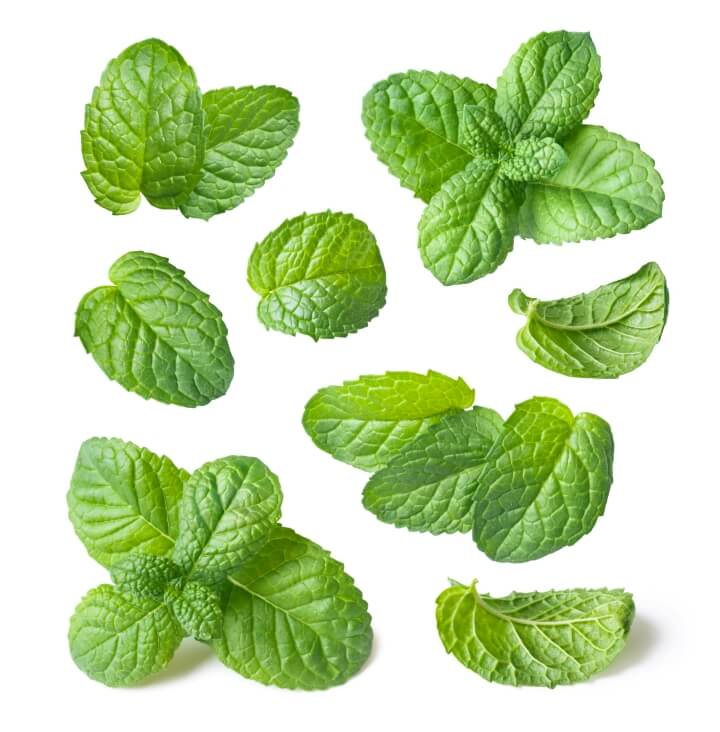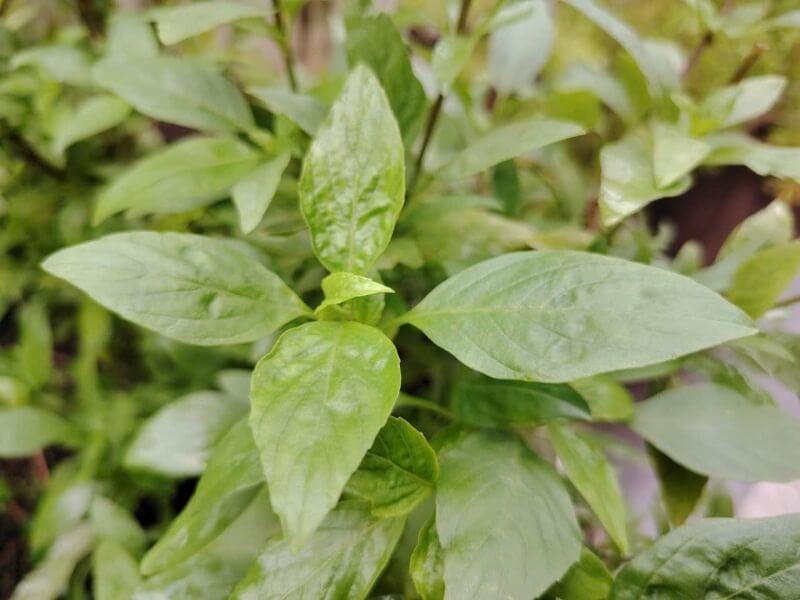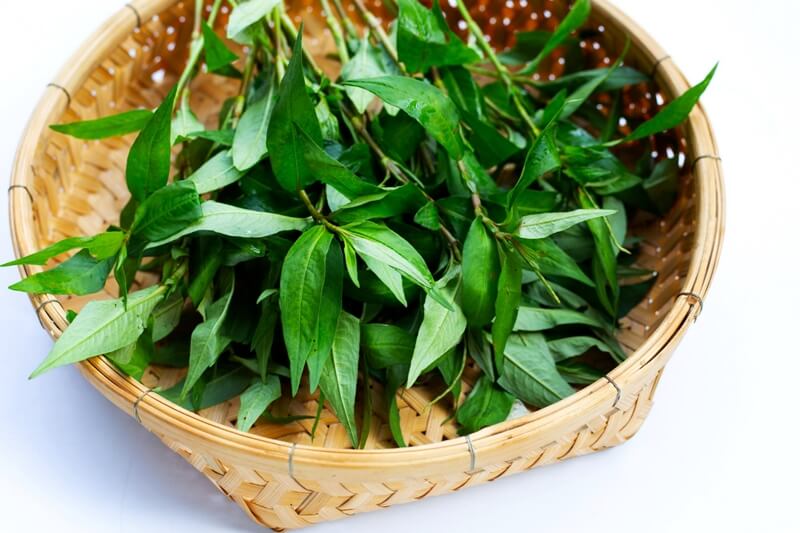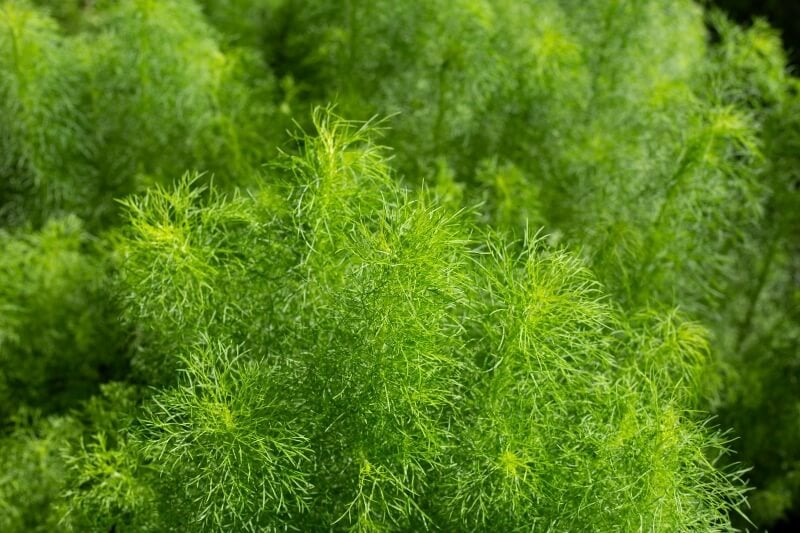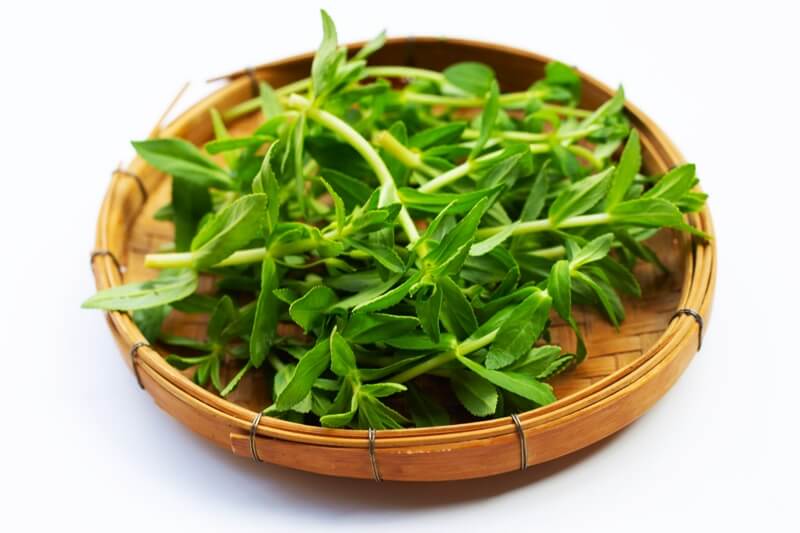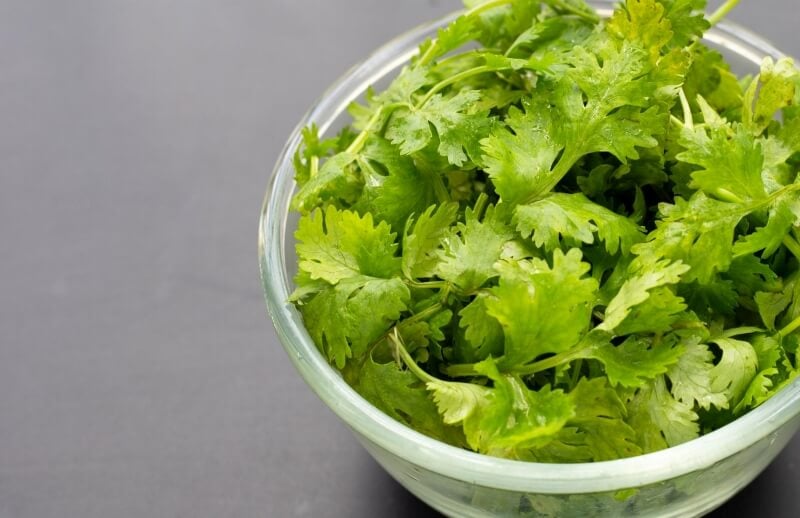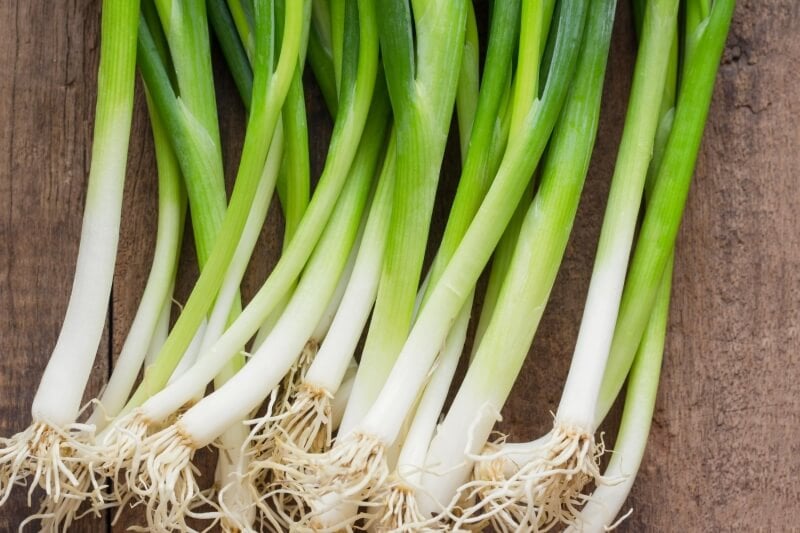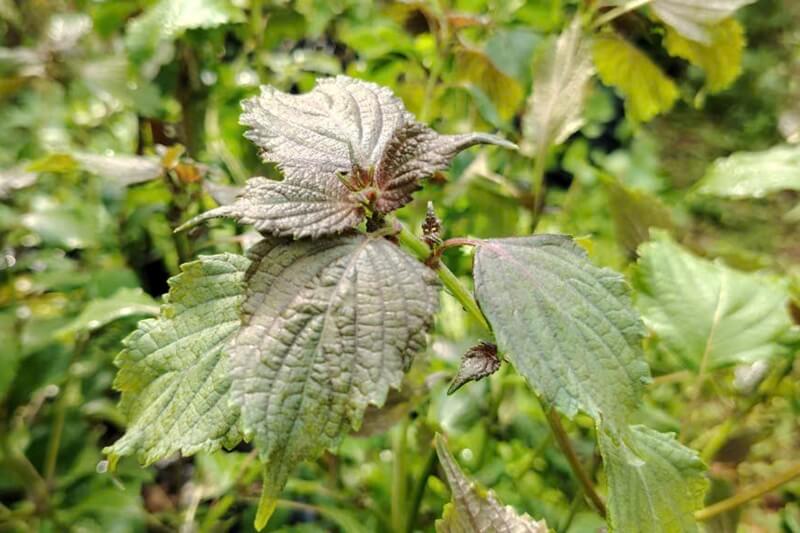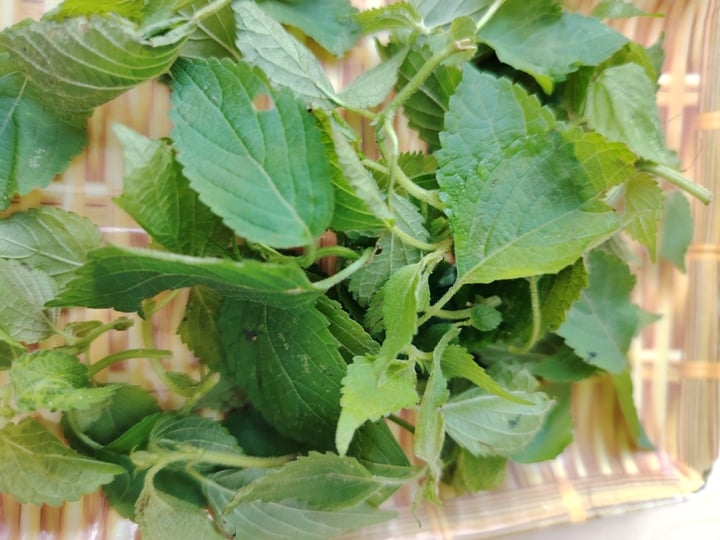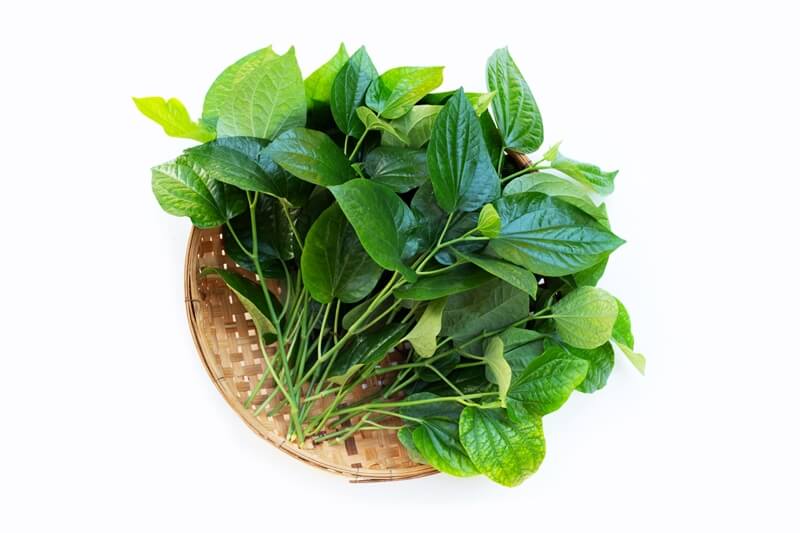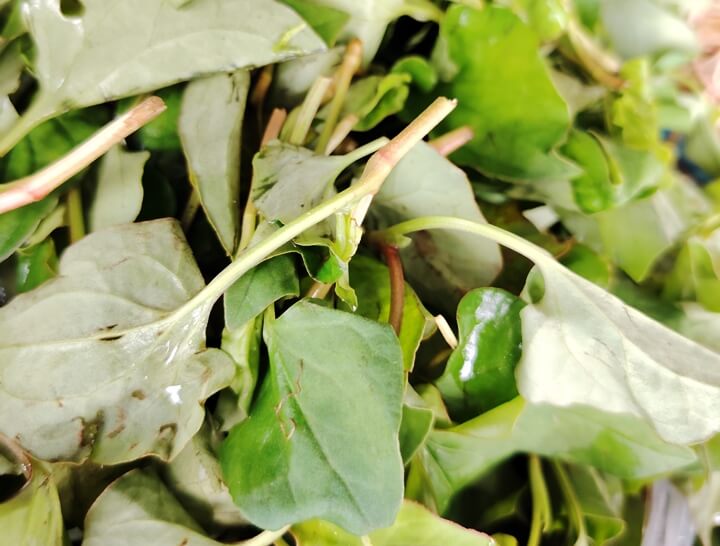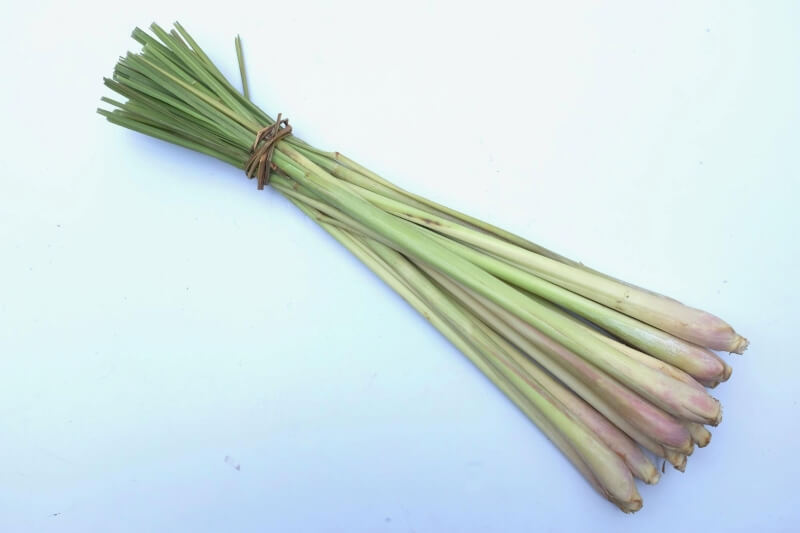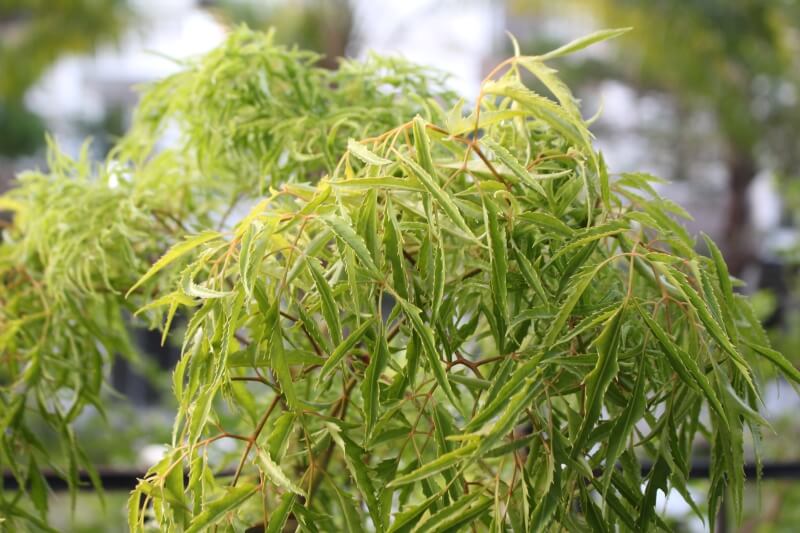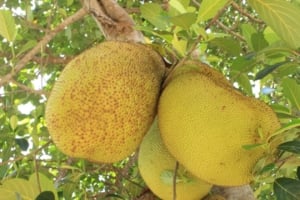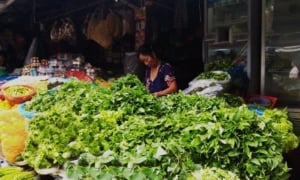Vietnamese herbs are spices used to refer to herbaceous plants, which are present in almost all local foods. Their leaves produce vibrant aromas, which are derived from essential oils.
These herbs are often eaten raw to enhance the flavor of processed meats and fish or used as spices for available foods such as salads, Pho, and vermicelli.
Here are 15 popular herbs in Vietnam with great flavor and their local names.
1. Peppermint (Bạc Hà)
Peppermint has a cool feature, from scent to taste, giving the eater a coolness on the tongue. It is popularly used to decorate cakes, beverages, and mixed raw vegetables. Mint is also extracted as oil.
Peppermint is also a valuable remedy for treating colds, flu, stomach bloating, and hiccups, and it is good for the digestive tract. The essential oil of Bac Ha is very effective for applying insect bites and relieving asthma attacks.
2. Water Mint (Húng Lũi)
Many people can’t distinguish water mint basil from peppermint because the stems of the leaves are very similar. To identify them, look at their leaves. Peppermint leaves have soft, serrated feathers, while water mint leaves are smooth and less wrinkled.
Like many other herbs, this basil stimulates a healthy digestive system, so we should add Hung Lui to the raw vegetable menu once weekly.
3. Sweet Basil (Húng Quế)
Sweet basil is added to vermicelli, Vietnamese Pho, boiled chicken, and chicken porridge. Basil seeds are famous for soft drinks.
Hung Que has a hot character and is a little spicy. According to oriental medicine, it treats colds, stuffy noses, fevers, and headaches. The locals often use this basil to aromatize the porridge, which can help the body susceptible to the flu.
4. Vietnamese Hot Mint (Rau Răm)
Rau Ram is most commonly used to deodorize the fishy seafood smells in Vietnam. It is also famous for serving ribs, porridge, or balut eggs.
Vietnamese hot mint has a spicy and warm taste. If used as traditional medicine, it is usually picked fresh from the garden or bought in unprocessed markets. Cold stomach pain, hemorrhoids, or poor digestion can be a remedy.
5. Dill (Thì Là)
Dill is indispensable when cooking fish, especially if fishballs cannot be delicious without Thi La.
Dill is also a miracle tonic for the kidneys, treating stomach pain or toothache.
6. Deaf Cilantro (Rau Ngỗ Điếc)
One of the other popular herbs is Rau Ngo Diec (deaf cilantro), which is extremely good for the digestive system. It has cool properties, so sour soups with freshwater fish are indispensable for deaf cilantro. Besides, it is eaten with liver pork and well-cooked fish.
7. Chinese cilantro (Ngò Gai)
Ngo Gai is called Chinese cilantro in North Vietnam and long cilantro in the South. The serrated edges at the leaf margins identify its features.
Whether raw or cooked, Chinese cilantro has a medicinal effect that stimulates the digestive system and reduces heat.
8. Corriander (Rau Ngò)
Corriander has small leaves that are light green. Its plant is usually about 20 cm long. The scent of Rau ngo is very fragrant and used in many Vietnamese dishes. Among herbs, coriander is widely used, can be eaten raw, chopped to make stir-fries, or used to decorate cooked food.
According to folklore, on the occasion of the Lunar New Year, coriander is used in water to bathe or wash with the desire to cleanse the body to receive the good things in a new year.
9. Scallion (Hành lá)
Scallions can be found in almost all Vietnamese dishes. They are both decorative and flavorful, and they are used in dishes such as vermicelli, Pho, stir-fried dishes, and stewed dishes. However, not everyone can eat scallions because of their slightly pungent and spicy smell.
The most common medicinal use of scallions is to relieve colds. So, whenever the local people get a cold, they cook a bowl of scallion porridge to help the body release toxic materials and circulate blood quickly.
10. Perilla Leaves (Tía Tô)
Perilla leaves (also called Beefsteak plant) have a characteristic aroma. The leaves are purple with soft serrated edges at the leaf marges. The feeling when eating perilla is dry in the mouth. Oriental medicine classifies perilla as the group of herbs that dissolve typhoid and fever and cause sweating.
Perilla can significantly alleviate the fishy smell, so Vietnamese people like to cook it with fish soups.
11. Oregano (Kinh Giới)
The indispensable dish of oregano is the bean vermicelli (Bun dau Hanoi). In all the vermicelli shops, its leaves are always the main herb used raw with the dish’s other ingredients.
Oregano is light green, and its shape resembles perilla leaves. Thus, we recognize its green color from purple perilla.
12. Piper Lolot (Lá Lốt)
Piper lolot is a herbaceous plant that lives for many years, and its body has longitudinal grooves. The leaves are monolithic, staggered, heart-shaped, dark green with a glossy leaf surface.
Piper lolot is prevalent in daily meals in Vietnam. The leaves are often used as aroma herbs when cooking soups, snails, or grilling beef.
In traditional medicine, this herb can cure many diseases. Folk remedies from Piper Lolot can treat gynecological diseases such as inflammation, spoilage, and osteoarthritis.
Besides, for heatstroke, headache, toothache, and cold stomach ache, just cook the leaves to eat, and then the body will quickly balance.
13. Fish Lettuce (Diếp Cá)
Fish lettuce’s fishy smell is a recognizable feature. These leaves are often served with pancakes, salads, or as a beautiful smoothie.
Modern medicine recognizes fish lettuce’s excellent therapeutic effects, such as rashes, digestive, antibacterial, or parasite killing.
14. Lemongrass (Sả)
Lemongrass is a fragrant herb that creates a lovely aroma for soups, typically for Bun Bo Hue. Lemongrass is a type of sheath plant with a total length of 1 m. However, we cannot eat its body; we use the 20 cm plant from its root to its body to create flavor for food.
Lemongrass can help to treat colds, headaches, rheumatism, and diuretics. Plenty of Vietnamese people cook lemongrass (all body and leaves) with some slides of ginger.
Then, mix the boiling water with the cold water to become warm. After that, dip the foot in this water for 15 minutes, which can help stop rheumatism.
15. Ming Aralia (Đinh Lăng)
The leaves of ming aralia (Dinh lang in Vietnamese) are light green and about 2-4cm long. They are small and disproportionately shaped like bird’s feet, and the leaf tip is pointed and lobed 3-4 times. Dinh lang leaves are used in daily meals, such as salads, served as raw vegetables, or used with fish salad.
People use the dry leaves of ming aralia in pillows, which helps them sleep better and avoid headaches. Besides, ming aralia roots are considered ginseng, but they are low-priced.
These herbs are typical aroma spices in Vietnam, which can improve the flavor and increase the value of Vietnamese food. Herbs have become popular in Vietnamese cooking and eating habits. Thus, when traveling to this country, you can try different herbs as ingredients in plenty of dishes.
Besides using them as spices, herbs are typical traditional medicine for the locals. However, changing it into medicine to release some diseases often takes a long time to get results. Despite that, the information about the herb as medicine here is just for reference, not the guides to stop sickness.
The essential method is to use Vietnamese herbs as specific aroma spices, supplying more vitamins for the body, improving health, and supporting us in eating food with better feelings.
Watch this video to learn how to pronounce a few herbs in Vietnamese:

